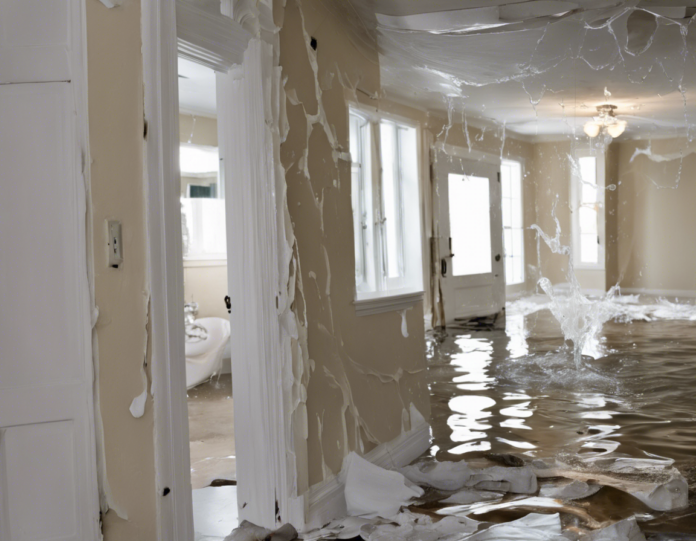Water leaks can wreak havoc on a property, causing damage to walls, ceilings, floors, furniture, and belongings. Dealing with the aftermath of a water leak can be stressful, time-consuming, and expensive. Whether the leak is due to a burst pipe, faulty appliance, roof damage, or natural disaster, it is essential to understand how to navigate the insurance claims process to ensure a smoother and more successful outcome.
In this comprehensive guide, we will explore the nuances of water leak insurance claims, providing you with the knowledge and tools to master this often complex and challenging process.
Understanding Your Insurance Policy
When it comes to filing a water leak insurance claim, the first step is to thoroughly review your insurance policy. Coverage for water damage can vary significantly from one policy to another, so it is crucial to understand what is and isn’t covered.
Key Points to Consider:
- Look for specific language regarding water damage coverage, including exclusions.
- Understand the difference between sudden and accidental damage versus gradual damage.
- Familiarize yourself with coverage limits and deductibles.
- Determine if you have additional coverage for items like mold remediation or temporary accommodation.
Steps to Take After Discovering a Water Leak
Upon discovering a water leak in your property, it is essential to act swiftly to minimize damage and expedite the claims process.
Immediate Actions to Take:
- Shut off the water source: Locate and turn off the main water supply to prevent further leakage.
- Document the damage: Take photos and videos of the affected areas before making any repairs.
- Contact your insurance company: Notify your insurer as soon as possible to initiate the claims process.
- Mitigate further damage: Take steps to prevent mold growth and additional damage, such as drying out the affected areas.
The Claims Process Demystified
Navigating the insurance claims process can be overwhelming, especially in the wake of a water leak. Understanding the following steps can help streamline the process and ensure a more successful outcome.
Overview of the Claims Process:
- File a claim: Contact your insurance company to report the water leak and begin the claims process.
- Document everything: Keep detailed records of all communication with the insurer, including claim numbers and adjuster information.
- Schedule an inspection: An adjuster will assess the damage and provide an estimate for repairs.
- Review the settlement: Evaluate the insurer’s offer and negotiate if necessary.
- Complete repairs: Once the claim is approved, work with contractors to repair the damage.
Common Challenges and How to Overcome Them
Water leak insurance claims can present various challenges, from coverage disputes to delayed settlements. Understanding these common hurdles and how to overcome them is essential for a successful claims process.
Common Challenges:
- Coverage disputes: Insurers may deny certain aspects of a claim, citing policy language or exclusions.
- Underestimation of damage: The initial estimate provided by the adjuster may not cover the full extent of the damage.
- Delays in processing: Claims processing can be slow, leading to frustration and prolonged property damage.
- Mold-related issues: Mold remediation may require additional documentation and approvals.
Tips for Overcoming Challenges:
- Review your policy carefully: Understand your coverage and policy limits to preempt potential disputes.
- Seek multiple estimates: Get quotes from different contractors to ensure the repair costs are accurate.
- Follow up: Stay in regular communication with your insurer to expedite the claims process.
- Document everything: Keep thorough records of all interactions, estimates, and receipts related to the claim.
FAQs (Frequently Asked Questions)
- Is water damage from all sources covered by my insurance policy?
-
Not necessarily. Most policies cover sudden and accidental water damage but may exclude gradual damage or damage from flooding.
-
Do I need to pay a deductible for a water leak insurance claim?
-
Yes, most policies require a deductible to be paid before the coverage kicks in.
-
Will my insurance premiums increase after filing a water leak claim?
-
It is possible that filing a claim could lead to an increase in premiums, but it varies by insurer and circumstances.
-
Is mold damage covered by standard insurance policies?
-
Coverage for mold damage can be limited. Some policies may offer coverage for mold remediation under specific circumstances.
-
How long does the claims process typically take for a water leak claim?
- The timeline can vary depending on the complexity of the claim and the responsiveness of all parties involved. It can range from a few days to several weeks.
In conclusion, mastering water leak insurance claims requires a combination of proactive preparation, swift action, and thorough documentation. By understanding your policy, knowing what steps to take after a water leak, and being prepared for potential challenges, you can navigate the claims process with greater confidence and success. Remember to stay proactive, communicate effectively with your insurer, and advocate for a fair settlement to ensure a smoother resolution to your water leak insurance claim.
